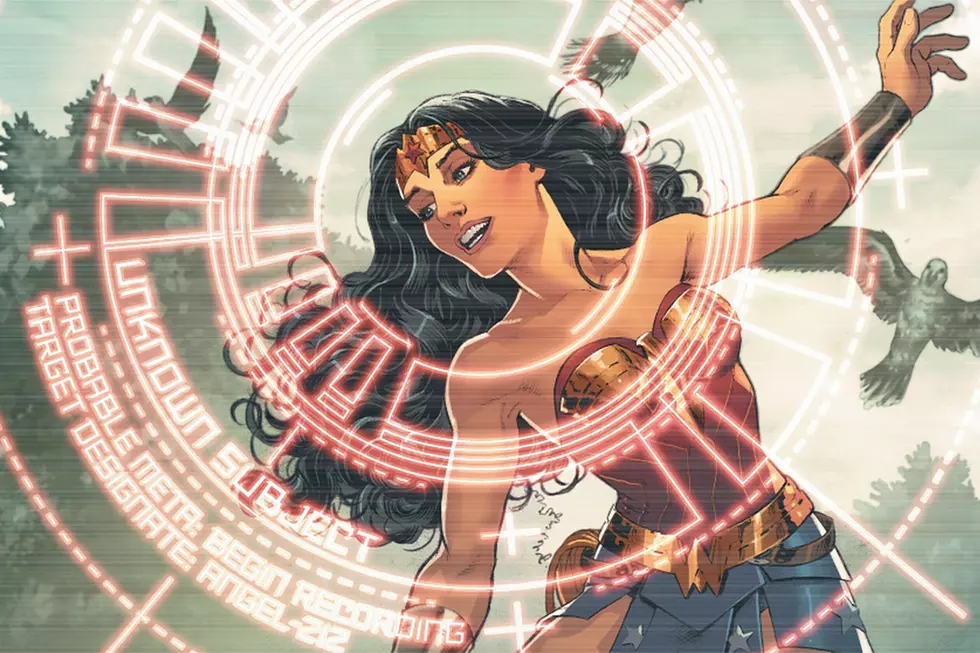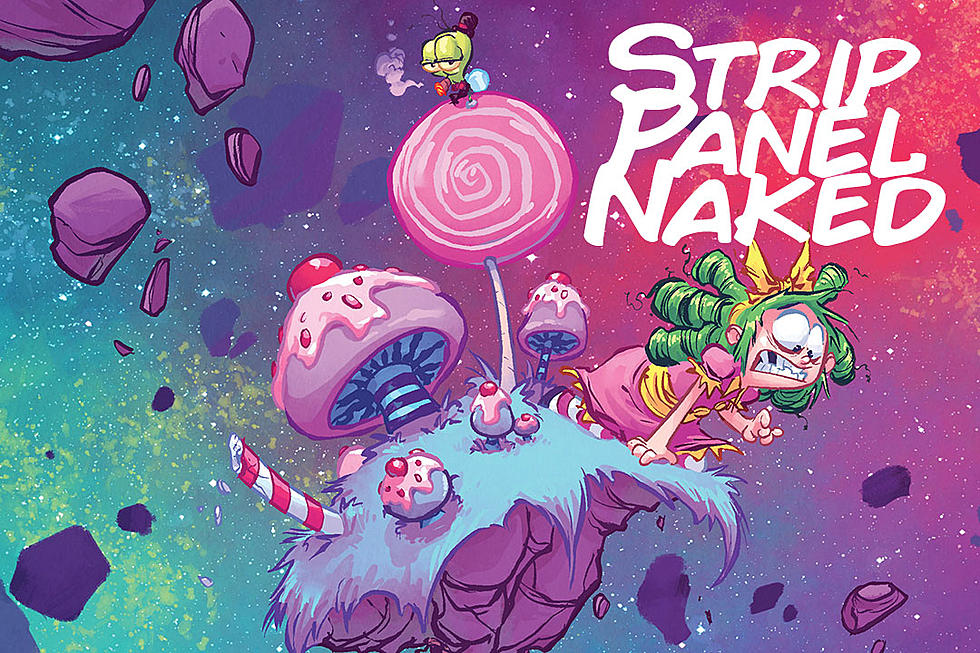
Advance Review: ‘Fight Club 2′ #1 Is Clever And Beautiful, But It’s Not All-Singing, All-Dancing
I have weird feelings about Fight Club, both the 1996 novel and 1999 movie adaptation. On the one hand, they're clever. Exceedingly clever, and I love clever. They have great dialogue and a twist that can really get you. The movie is visually stunning. And yet, there's the big question: "What exactly is this trying to say?" Is it a satire and indictment of macho behavior, or a (perhaps unwilling) endorsement of it?
The first issue of author Chuck Palahniuk's comics sequel to his book with artist Cameron Stewart (though in some ways, it seems to be more of a sequel to the movie) is in every way a continuation of that. It's clever, it's gorgeous, and it isn't entirely clear what it's trying to get across.
Here's the thing: Neither the narrator nor --- and spoilers for a 19-year-old book and 16-year-old movie here --- his alter-ego, Tyler Durden, are good guys. They're just opposite sides of the bad-guy coin.
Here, the narrator (who is unnamed in the book and movie, is often referred to by fans as Jack, and here is going by the name Sebastian, one of the fake names he often used in support groups) has settled back into a life of consumerism and venality, with Tyler seemingly out of his life. He's married to Marla, the woman with whom he used to crash support groups, and has a son. They have the typical, looks-happy-but-really-isn't suburban life. The narrator is highly medicated, to the point where it's dulling his experience of life.
That, quite honestly, is a bit of a tired premise, but the depiction of the narrator's experience being dulled is where Stewart and letterer Nate Piekos really take the opportunity to be creative. Pills, rose petals and sound effects of dogs barking cover up narration boxes, word balloons, and the art itself, to put the reader in the narrator's state of mind. It's a great way to get across the feeling without beating the reader over the head with it, and it complements Stewart's absolutely knockout art throughout the book. Just as in the movie, Tyler pops up in the art before he actually shows up as a character, and Stewart pulls it off with aplomb. He does a wonderful job of making everything clear without overplaying his hand.
Tyler --- who is still around without the narrator really knowing it --- is a full-on terrorist leader, overseeing attacks around the world via Project Mayhem, a concept introduced in the last third or so of the original book. It took the insular Fight Club to the streets, more or less.
Tyler is awful. He leads an organization that is comparable to ISIS or Al Qaeda. In 1999, a terrorist group could be weirdly heroic in a twisted way, but now the context has entirely changed. One scene shows Tyler directing terrorist acts around the world, and saying, "A car bomb ought to grow our business in Tunis," and it's almost played for laughs, but it's chilling in the context of 2015.
Yet Tyler, as he's portrayed here and as he's played by Brad Pitt in the movie, is extremely charismatic. He makes valid points about consumerism being bad and taking away human identity. It's easy to say, "That guy's cool and I want to be like him." It's where a lot of Fight Club fans get hung up, I think. The message they take away is, "Tyler Durden is cool," instead of, "Tyler Durden is a destructive, terrorizing, overly macho monster."
The book and this comic are clearly supposed to be satirical, and it's very evident in this issue when Marla goes to a support group for kids with progeria (the disease that rapidly ages people, so they look like they're 80 when they're eight) and complains about her marriage while saying she has "a very mild case" of the disease. That sequence, for all the discomfort it engenders by depicting a woman in her 30s graphically describing her sex life in front of sick kids, is probably the one this issue pulls off best, because it says a lot about Marla and the narrator while also getting in some needed exposition. It's so over-the-top that it works. (By the way, even with that exposition, I absolutely wouldn't recommend reading this if you haven't seem the movie or read the book. You'll be totally lost.)
Yet, just a few scenes later, Marla is begging Tyler to come out of her husband so she can be taken away from "this bland, boring life." Again, Tyler Durden is portrayed as the coolest guy on Earth, the one who drives women wild. The satire there isn't clear at all.
I know what Palahniuk is trying to do there, and what he's been trying to do with his portrayal of Tyler all along. Often, the worst men on the planet are also the most charismatic, the most magnetic. They draw people in and convince them to do the worst possible things one could imagine. But in doing so, he sometimes makes it seem as though Tyler is aspirational. He isn't. And for the sake of the readers who are going to pick this book up and perhaps take away the message that Tyler Durden is a character to admire, he could stand to be a little more repulsive.
Fight Club 2 is on sale May 27, with final order cutoff today, May 4. Check out our video interview with Chuck Palahniuk below:
More From ComicsAlliance

![Batgirl’s Latest DC Collectibles Figure Cements Her Status as a DC Icon [Review]](http://townsquare.media/site/622/files/2017/02/IMG_1606.jpg?w=980&q=75)
![The Best Dark Horse Comics Covers of 2016 [Gallery]](http://townsquare.media/site/622/files/2017/01/featured.png?w=980&q=75)




![The Best DC Comics For Young Readers [Kids’ Comics]](http://townsquare.media/site/622/files/2016/08/YADC1.png?w=980&q=75)

